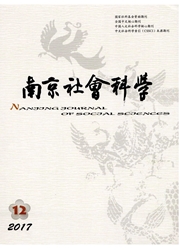

 中文摘要:
中文摘要:
协同学自20世纪70年代被正式创立以来,已和突变论、耗散结构论一道构成了人类科学方法论领域里的新三论,成为当今系统科学中最具影响力的理论之一,但追溯它的思想却源远流长:早在古希腊时期,朴素协同论思想的萌芽就已经孕育;到了近代,这一萌芽借助地质学与生物学领域的进化论思想而渐趋成熟,它的整体均衡、多要素协同、对立与转化等思想不仅直接促进了达尔文进化论的形成,而且通过黑格尔辩证法的反向揭示和马克思恩格斯的逻辑校正,最终成为了现代协同学理论的重要基石。探析协同思想的渊源,不仅有助我们正确把握协同理论产生的历史脉络,也有利于我们在认识论的基础上,继承和发展协同学理论,用更锐利、更科学的思维方法去探究更多的人类未知世界。
 英文摘要:
英文摘要:
Since Synergistic theory was established in 1970s, it has become one of the most in- fluential theories. It could be traced back to ancient Greece, and gradually matures in modern times with the development of geology and biology. Its thoughts, including overall balance, multi-element synergy, antagonism, not only contribute to the formation of Darwin' s theory of evolution, but also become an important cornerstone. Studies on this theory will not only help us to correctly grasp its historical track, but also help us to inherit and further develop its thoughts.
 同期刊论文项目
同期刊论文项目
 同项目期刊论文
同项目期刊论文
 期刊信息
期刊信息
